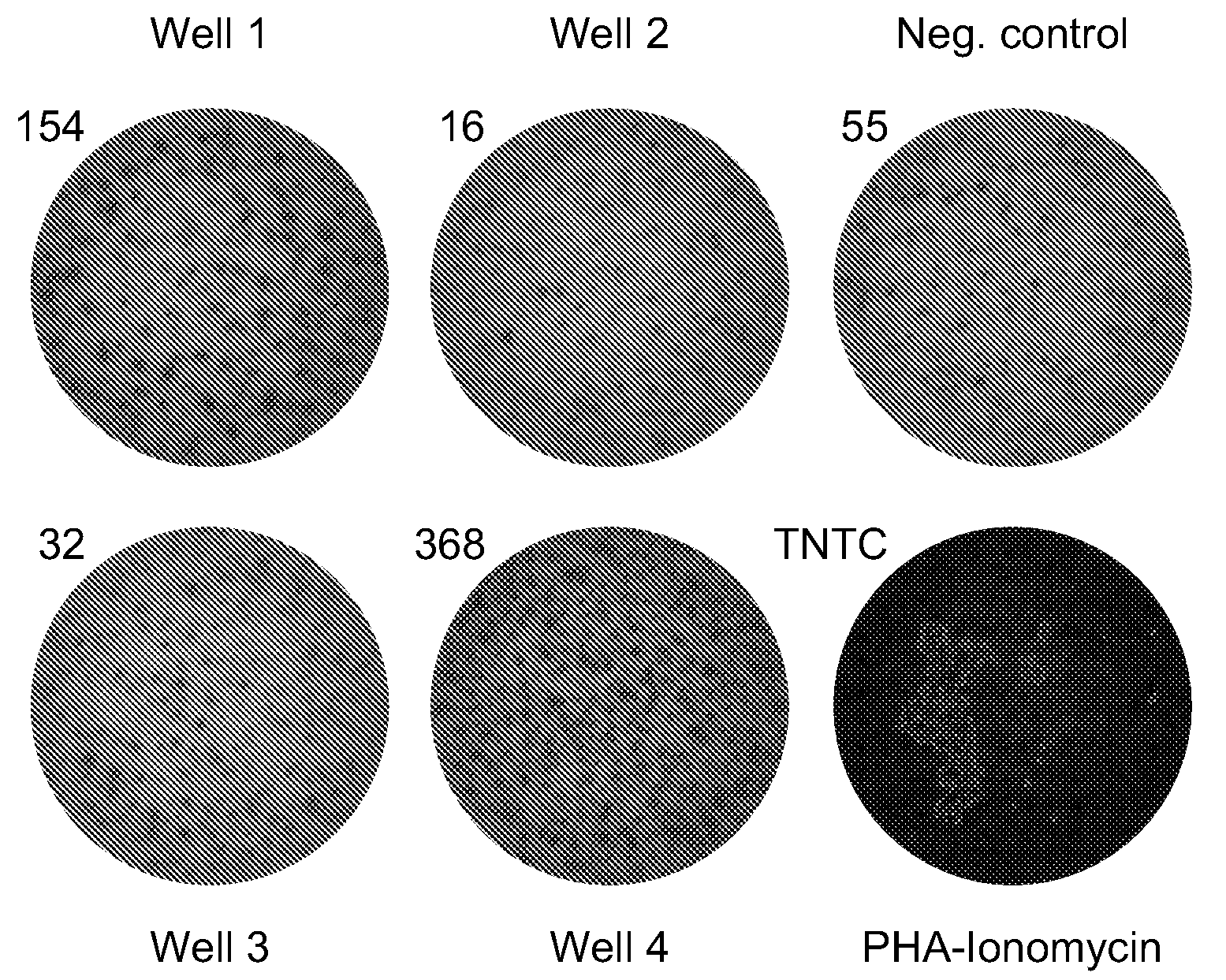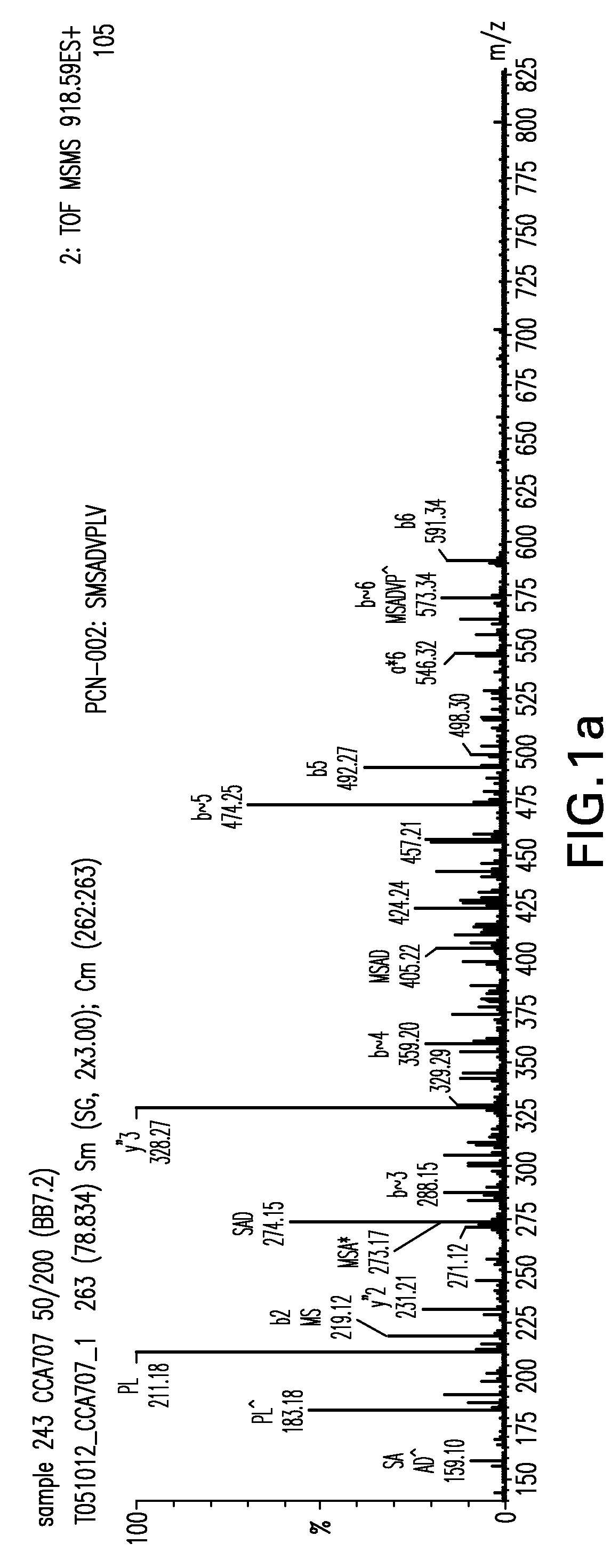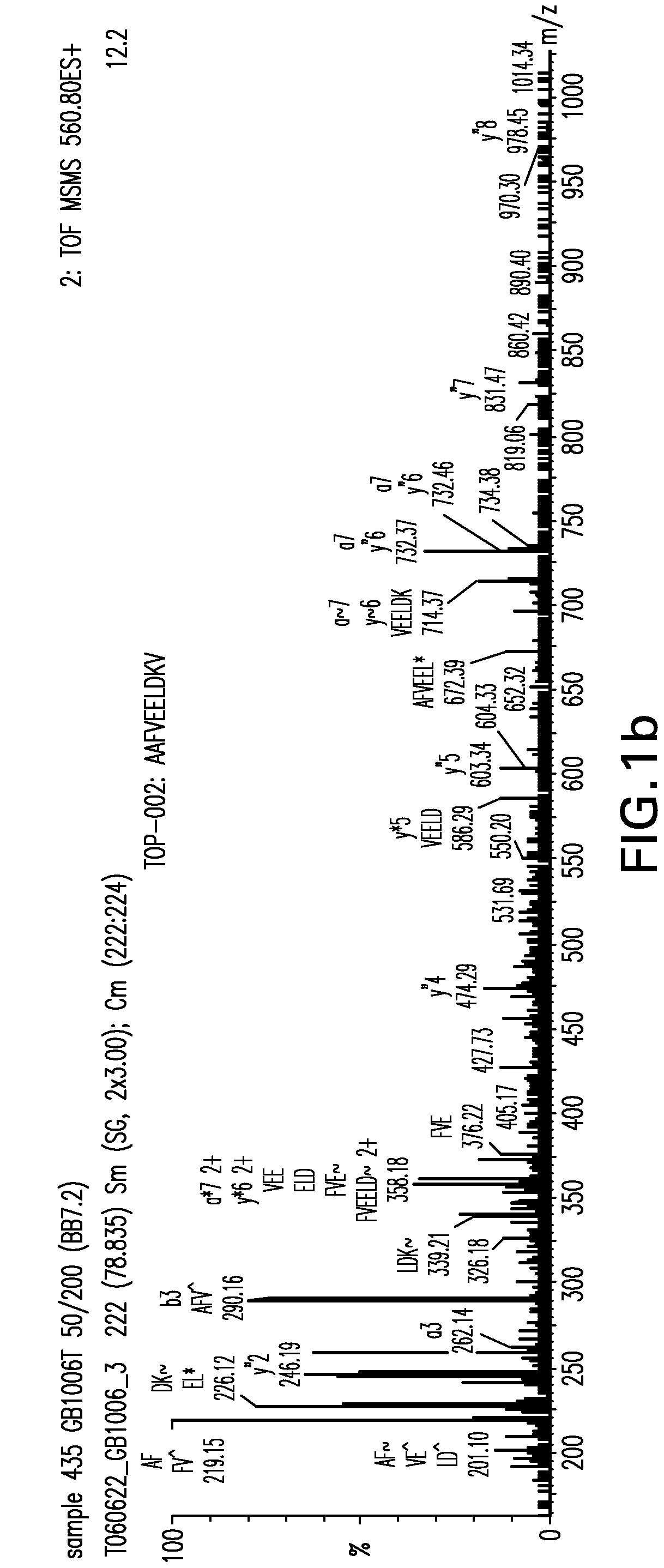Novel immunogenic epitope for immunotherapy
an immunogenic epitope and immunotherapy technology, applied in the field of new amino acid sequences of peptides, can solve the problem of not providing precise information as to the use of the antigens transcribed from these genes in an immune therapy
- Summary
- Abstract
- Description
- Claims
- Application Information
AI Technical Summary
Benefits of technology
Problems solved by technology
Method used
Image
Examples
example 1
Identification of Tumour Associated Peptides (TUMAPS) Presented on Cell Surface
Tissue Samples
[0184]Patients' tumour and healthy tissues were provided by several different clinical sites (see Table below). Written informed consents of all patients had been given before surgery. Tissues were shock-frozen in liquid nitrogen immediately after surgery and stored until isolation of TUMAPs at −80° C.
Isolation of HLA Peptides from Tissue Samples
[0185]HLA peptide pools from shock-frozen tissue samples were obtained by immune precipitation from solid tissues according to a slightly modified protocol (Falk, K., et al. Nature 351, 290-296 (1991); Seeger, F. H. et al., Immunogenetics 49, 571-576 (1999)) using the HLA-A*02-specific antibody BB7.2 or the HLA-A, -B, -C-specific antibody W6 / 32, CNBr-activated sepharose, acid treatment and ultrafiltration.
Detection of TUMAPs by ESI-Liquid Chromatography Mass Spectrometry (ESI-LCMS)
[0186]The obtained HLA peptide pools were separated according to their...
example 2
Expression Profiling of Genes Encoding the Peptides of the Invention
[0188]The peptides identified as being presented on the surface of tumour cells by MHC molecules are likely able to induce T-cells with a high specificity of recognition for the tissue from which they were derived. In order to minimise the risk for autoimmunity induced by vaccination with such peptides the inventors focused on those peptides that are derived from proteins that are overexpressed on tumour cells compared to the majority of normal tissues.
[0189]The ideal peptide will be derived from a protein that is unique to the tumour and not present in any other tissue. To identify peptides that are derived from genes with an ideal expression profile, the identified peptides were assigned to the proteins and genes, respectively, from which they were derived and expression profiles of the genes were generated.
RNA Sources and Preparation
[0190]Surgically removed tissue specimens were provided by several different clin...
example 3
Re-Detection of Identified TUMAPs by ESI-Liquid Chromatography Mass Spectrometry (ESI-LCMS) in Additional Tumour Samples
[0197]TUMAPs identified by the method of EXAMPLE 1 were systematically searched for on colorectal tumour samples by mass spectrometry.
[0198]The obtained HLA peptide pools were separated according to their hydrophobicity by reversed-phase chromatography (CapLC, Waters) and the eluting peptides were analyzed in a hybrid quadrupole orthogonal acceleration time of flight tandem mass spectrometer (Q-TOF Ultima, Waters) equipped with an ESI source. Peptide pools were loaded onto a C18 pre-column for concentration and desalting. After loading, the pre-column was placed in line for separation by a fused-silica micro-capillary column (75 μm i.d.×250 mm) packed with 5 μm C18 reversed-phase material (Dionex). Solvent A was 4 mM ammonium acetate / water. Solvent B was 2 mM ammonium acetate in 80% acetonitrile / water. Both solvents were adjusted to pH 3.0 with formic acid. A binar...
PUM
| Property | Measurement | Unit |
|---|---|---|
| concentration | aaaaa | aaaaa |
| concentration | aaaaa | aaaaa |
| pH | aaaaa | aaaaa |
Abstract
Description
Claims
Application Information
 Login to View More
Login to View More - R&D
- Intellectual Property
- Life Sciences
- Materials
- Tech Scout
- Unparalleled Data Quality
- Higher Quality Content
- 60% Fewer Hallucinations
Browse by: Latest US Patents, China's latest patents, Technical Efficacy Thesaurus, Application Domain, Technology Topic, Popular Technical Reports.
© 2025 PatSnap. All rights reserved.Legal|Privacy policy|Modern Slavery Act Transparency Statement|Sitemap|About US| Contact US: help@patsnap.com



